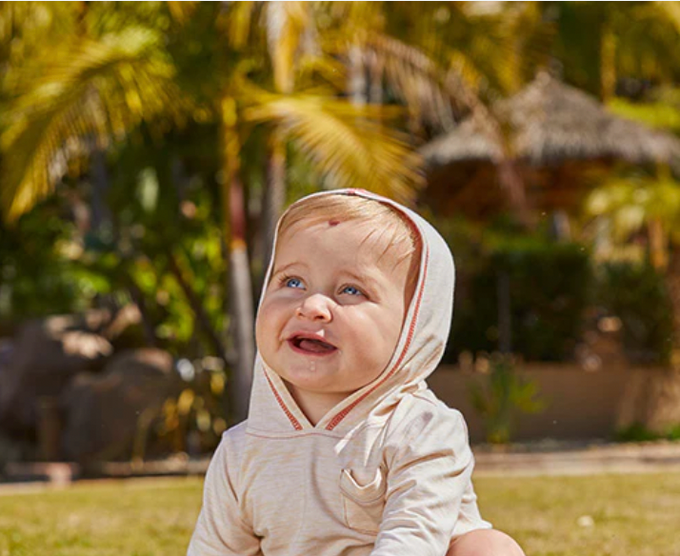The Science Behind UPF Clothing: How Does It Block UV Rays?

Here at UV Skinz's we're super passionate about teaching you how to practice sun safety. You can even read about why we started our company and how that continues to drive us today in our founder's story.
Protecting your skin from the harmful effects of the sun's ultraviolet (UV) rays is essential, especially when it comes to your little one(s). That's where UPF (Ultraviolet Protection Factor) clothing comes into play. But have you ever wondered how this type of clothing actually works to shield you from the sun's UVA and UVB rays? In this blog post, we'll dive into the science behind UPF clothing and how it blocks UV rays.
Understanding How UV Radiation Works: The Basics
Before we get into the science behind UPF clothing, we're going to share some important pointers about radiation. The sun emits three types of harmful UV rays: UVA, UVB, and UVC rays, although UVC rays are absorbed by the ozone layer and don't reach earth's surface. We're going to focus on UVA and UVB rays.
UVA rays are responsible for premature aging and wrinkles and can penetrate through clouds and glass and are responsible for some skin cancers. UVB rays are the main cause of sunburns, may damage your DNA, and can vary in intensity depending on the time of day and location. UVB rays are responsible for most skin cancers.
How UPF Clothing Blocks UVA and UVB Rays
UPF clothing is specially designed to protect against these harmful UV rays to protect your skin. UPF clothing and swimwear is often preferred over sunscreen as it covers more of your skin; however, sunscreen is still important for those areas clothing can't cover, like your face, ears, hands, neck, and feet.
UPF clothing incorporates specific fabrics that contains rigid weaves with deep fibers to create a physical obstruction to UV rays.
Here's how UPF clothing protects you from UV rays:
Tight Weave or Dense Fabric
UPF clothing features tight weaves and dense, thick fabric to protect you from UV rays. This minimizes the space between your apparel's fibers, which stops UV radiation from reaching your skin.
Special Fabric Coatings
Some UPF clothing may have additional coatings, which can wash out and be harmful to you and the environment. Be careful of these coatings and ensure that the UPF clothing company you choose to purchase from utilizes third-party testing.
Color and Design
The color and design of UPF clothing also play a role in its effectiveness. Darker and more densely pigmented fabrics tend to offer better UV protection. Additionally, the design of the clothing, such as long sleeves and wide-brimmed hats, further reduces UV exposure.
Understanding the UPF Rating System
UPF, or Ultraviolet Protection Factor, refers to how much ultraviolet (UV) radiation a fabric blocks from the sun. A higher UPF rating indicates greater protection from UV radiation. For example, UPF 50+ clothing provides excellent protection by blocking over 98% of UV rays.
Every article of clothing is tested to determine the level of UV radiation it blocks on a scale from 15 to 50+.
To get The Skin Cancer Foundation's Seal of Recommendation, an article of clothing must have a UPF rating of at least 30+.
What to Look for When Choosing UPF Clothing
When looking for UPF clothing, be sure to consider the following:
- UPF rating
- Fabric type
- Properties (such as moisture-wicking and odor resistant)
- Style
- Price
It's a best practice to wear UPF 50+ clothing which offers excellent protection from the sun's UV rays with broad-spectrum SPF 30+ sunscreen to ensure you're keeping your skin safe.
UPF clothing helps protect your skin from UV radiation and when used with broad-spectrum sunscreen can help keep skin damage and skin cancer at bay. Remember that UPF clothing is not an end-all in terms of sun protection though, you still need to wear sunscreen (and chapstick with SPF), a wide-brim sun hat and sunglasses whenever possible.







